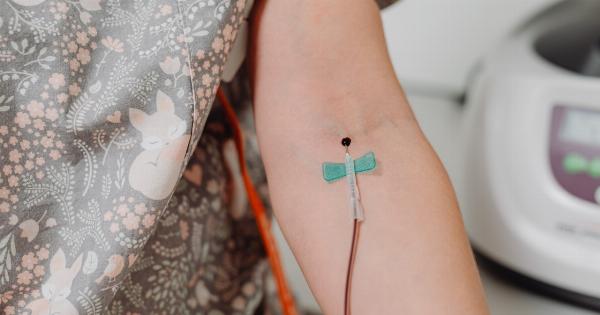Edema in the legs is a common condition that can have various underlying causes. Chronic venous insufficiency (CVI) is one of the conditions that can cause edema in the legs.
CVI occurs when the veins in the legs do not efficiently return blood to the heart, leading to a buildup of blood and fluids in the legs. In this article, we will discuss the causes, symptoms, diagnosis, and treatment options for CVI.
Causes of Chronic Venous Insufficiency
CVI can be caused by various factors that affect the proper functioning of the venous system. The most common causes of CVI are:.
- Varicose veins
- Deep vein thrombosis (DVT)
- Obesity
- Pregnancy
- Smoking
- Sedentary lifestyle
Symptoms of Chronic Venous Insufficiency
CVI can cause several symptoms that can affect the legs and other parts of the body. The most common symptoms of CVI are:.
- Swelling or edema in the legs, ankles, and feet
- Pain in the legs, especially after long periods of standing or sitting
- Cramping or soreness in the legs
- Itching or tingling in the legs
- Varicose veins or spider veins
- Skin discoloration or ulcerations
Diagnosis of Chronic Venous Insufficiency
Diagnosing CVI usually involves a physical exam and a discussion of your symptoms and medical history. Additionally, your doctor may perform certain tests to evaluate the blood flow and pressure in your legs.
The most common tests used to diagnose CVI are:.
- Duplex ultrasound, which uses sound waves to create images of the veins and evaluate the blood flow
- CT or MRI scans, which can provide detailed images of the veins and detect any blockages or abnormalities
- Venography, which involves injecting a dye into the veins and taking X-rays to evaluate the blood flow
Treatment Options for Chronic Venous Insufficiency
Treating CVI focuses on improving blood flow and reducing symptoms. The most common treatment options for CVI are:.
- Compression stockings or bandages, which can improve the blood flow and reduce swelling
- Lifestyle changes, such as exercise, weight loss, and avoiding long periods of standing or sitting
- Medications, such as diuretics or blood thinners, to improve circulation and prevent blood clots
- Endovenous procedures, such as radiofrequency ablation or laser treatment, to close off damaged veins and redirect blood flow
- Surgery, such as vein stripping or bypass, to remove or repair damaged veins
Preventing Chronic Venous Insufficiency
CVI can be prevented by adopting healthy lifestyle habits and avoiding risk factors. Some of the ways to prevent CVI are:.
- Maintaining a healthy weight and avoiding obesity
- Exercising regularly and staying active
- Avoiding prolonged periods of standing or sitting
- Quitting smoking
- Wearing compression stockings or bandages if you have a family history of CVI or other risk factors
When to See a Doctor
If you experience any of the symptoms of CVI, such as edema in the legs, pain, or varicose veins, you should see a doctor as soon as possible. Early diagnosis and treatment can prevent further complications and improve your quality of life.
Conclusion
Edema in the legs can be a sign of chronic venous insufficiency (CVI), a condition that affects the proper functioning of the veins in the legs. CVI can have various underlying causes, including obesity, pregnancy, and varicose veins.
Symptoms of CVI include swelling, pain, and skin discoloration. Early diagnosis and treatment of CVI can prevent further complications and improve your quality of life.





























